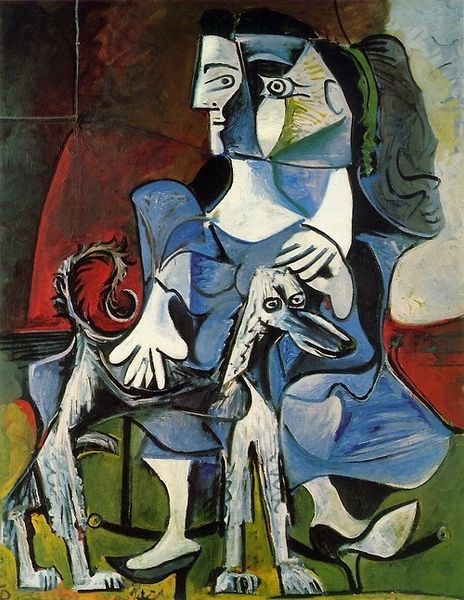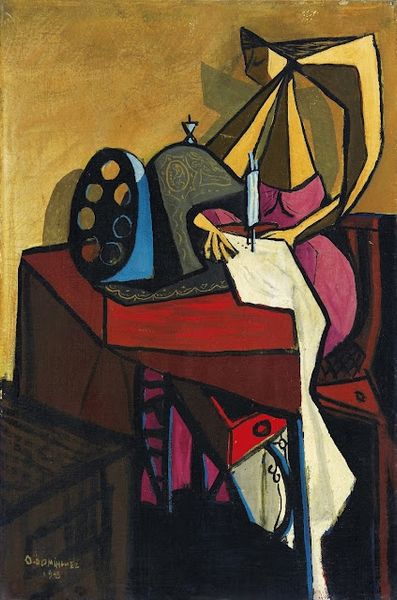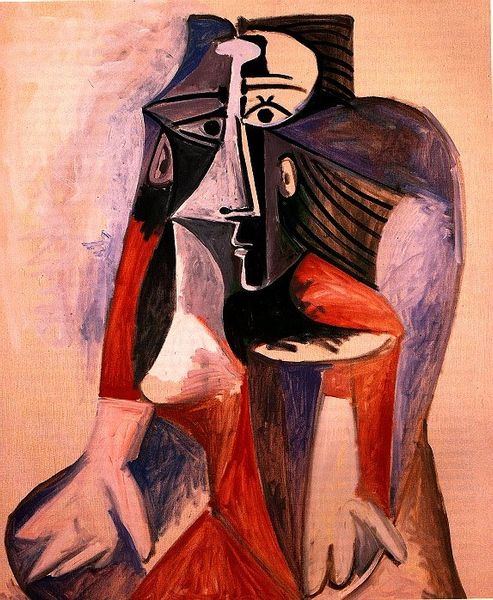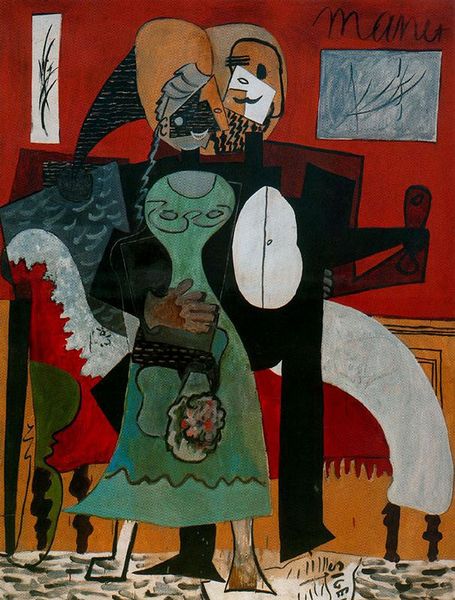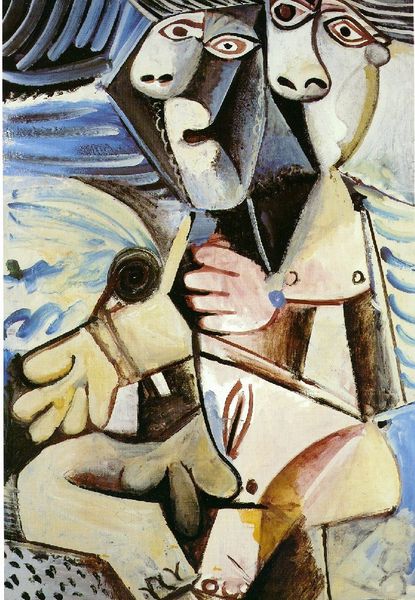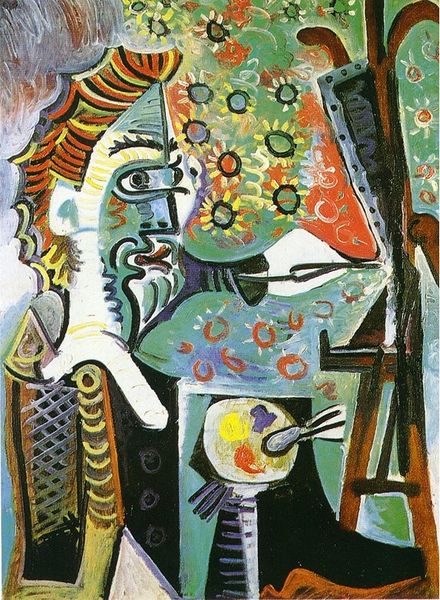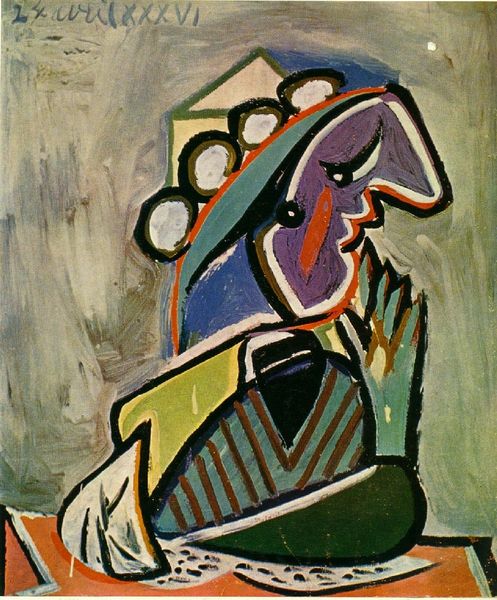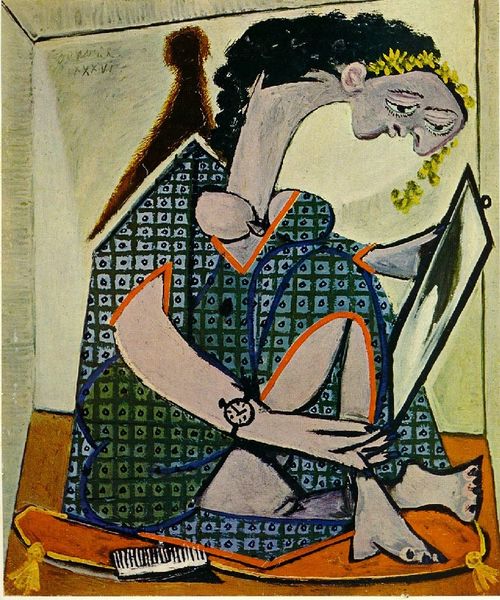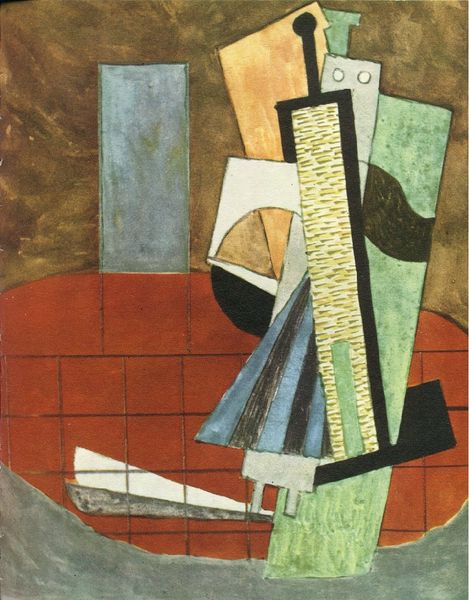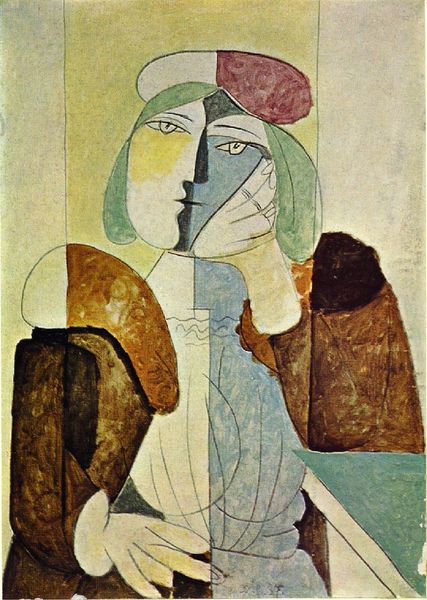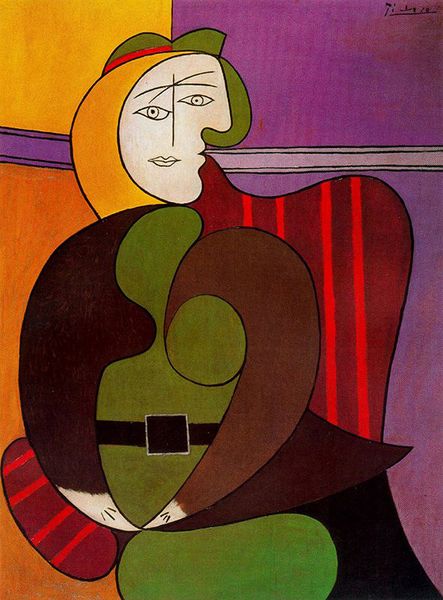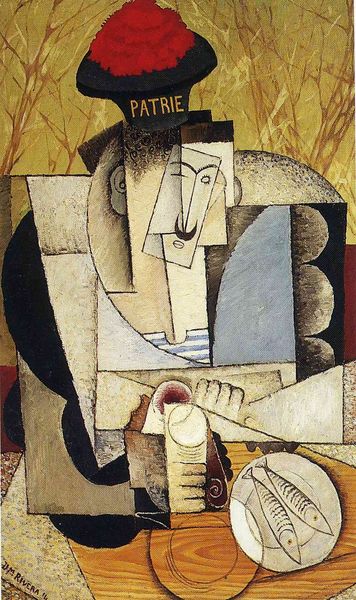
painting, acrylic-paint
#
portrait
#
cubism
#
abstract painting
#
painting
#
pop art
#
acrylic-paint
#
acrylic on canvas
#
abstraction
#
portrait art
#
modernism
Dimensions: 130 x 97 cm
Copyright: Pablo Picasso,Fair Use
Curator: Immediately, I’m struck by the angularity and disjointed nature of the composition. The subject, almost dissolving into abstract shapes, sits at the piano, yet we're hardly presented with any clear idea of depth. Editor: And look at the acrylic paint! You can really sense the build-up of pigment; there is an awareness of production on the two-dimensional plane and even the physical weight and handling of material in the impasto technique, although its relatively mild here, is undeniable. We’re looking at Pablo Picasso’s “The Piano (Velazquez),” painted in 1957. Curator: Indeed. One cannot ignore the influence of Cubism on this portrait. The deconstruction of form, the flattening of space – all hallmarks of Picasso’s approach. I find myself particularly drawn to the interplay between positive and negative space around the piano itself. Note also how line dictates its perspective as we visually dissect a musical and artful experience. Editor: Speaking of the piano, I find myself curious about how his approach relates to actual musical production. How the work is materially reflective of performance practice or the actual instrument? Beyond the geometric language there's an engagement with mass production here—an echo of industrial processes translated through manual craft that sits within the trajectory of postwar painting techniques, no? Curator: That's interesting! I find the figure, reduced almost to pure form, equally compelling. Note its ambiguous face with this empty, yet circular head area— a clear attempt to move away from traditional portraiture, no? Picasso seems intent on exploring the essential qualities of representation rather than offering a faithful likeness, a truly formal experiment. Editor: Yet the materiality pulls it back towards our physical reality, a reminder of artmaking as grounded physical endeavor and what it has to reflect about labor. What is he thinking about with this abstraction in portraiture, where abstraction takes precedent? Or portraiture, when these historical, and sometimes invisible, artistic practices and forms meet? Curator: It highlights painting as process, the artist challenging perception itself—I find Picasso pushing representational boundaries while exploring abstract formal structures that expose this rich moment of art history. Editor: Absolutely. This portrait, from its surface quality to the underlying support, is rife with painterly tension: the negotiation between labor, form, and material production in his day that he so effectively displays.
Comments
No comments
Be the first to comment and join the conversation on the ultimate creative platform.
